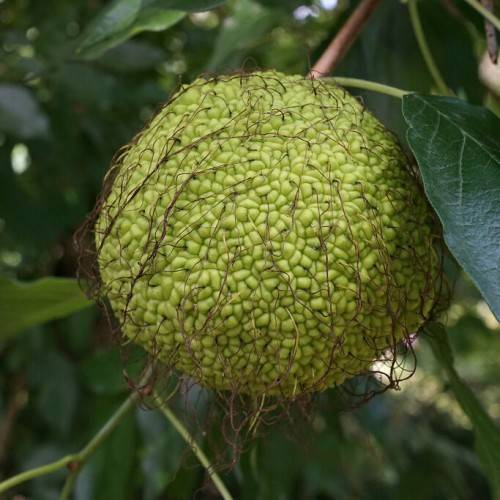
osage orange
Maclura pomifera
Cycle:
Perennial
Watering:
Minimum
Hardiness Zone:
4 - 9
Flowers:
Flowers In Summer
Sun:
Full sun,part shade
Fruits:
Fruits Ready In
Leaf:
Yes
Growth Rate:
Low
Maintenance:
Low
Drought Tolerant:
Yes
Thorny:
Yes
Care Level:
Medium
watering
Osage orange (Maclura pomifera) should be watered once a week, with 1-2 inches of water. Make sure the water runs evenly throughout the soil. Osage orange trees should not be overwatered, as this can lead to root rot and other health issues. Allow the soil to dry out between waterings. During hot and dry summer months, it may require more frequent waterings. Observe the leaves and if they start wilting it is a sign that the plant is in serious need of water. Reduce watering when autumn and winter come around – these cold seasons generally require less water. Too much water can cause leaf drooping and defoliation.
sunlight
Osage orange (Maclura pomifera) prefers full sunlight for most of the day, with at least 6-8 hours of direct sunlight each day for optimal growth and health. Plants grown in partial shade may struggle to reach their full potential. These trees do best when placed in a location that gets the most sunlight throughout the day with some protection from late afternoon sun. They should receive direct sunlight in the morning, mid-day, and early afternoon hours. Osage orange trees appreciate a bit of shade during the hottest part of the day, particularly in warmer climates.
pruning
Osage orange (Maclura pomifera) should be pruned in late winter or early spring to promote strong and healthy growth. Before pruning, examine the outermost branches for damage, dead wood, and diseased or insect-infested growth. Remove any damaged or dead growth, and prune any diseased parts of the plant. Next, take a look at the overall shape of the plant. If needed, prune back any long branches that extend beyond the natural shape of the tree. When cutting a branch, angle the cut to direct water away from the trunk and into the branch, which helps reduce the chances of decay. Additionally, prune out any branches that cross or rub against each other, as this can cause damage. Finally, consider removing any inward-growing branches, as these can quickly overtake the center of the tree and outcompete other branches. Overall, pruning less is more when it comes to osage orange. Prune too much and you risk harming the health and form of the tree.
